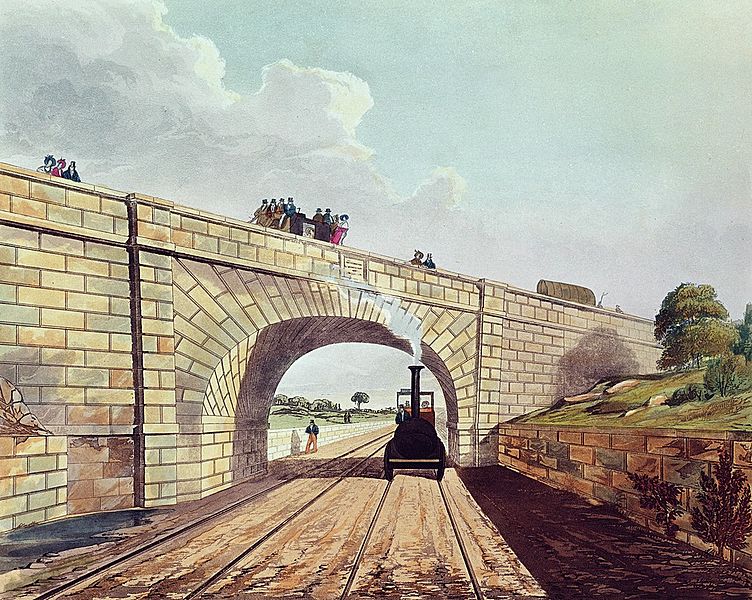Image: Rainhill Bridge, from Bury's Liverpool and Manchester Railway, 1831 - artfinder 3408

Description: The skew bridge constructed at Rainhill to take the 1753 Liverpool and Warrington turnpike road (now the A57) over the Liverpool and Manchester Railway. The road crosses at an angle of 34° to the perpendicular, with a span of 54 ft (16.5 m) compared to a distance across the track of 30 ft (9.1 m). The thrust lines of a conventionally built arch would therefore fall outside the bridge abutments on either side, making it unstable. The solution is to lay the bricks forming the arch at an angle to the abutments on either side. This technique, which results in a spiral effect in the arch masonry, provides extra strength in the arch to compensate for the angled abutments; but it also meant that each masonry block had to be individually and expensively cut to its own unique shape, with no two edges either parallel or perpendicular. Experience of building such arches was very limited in 1829, and it is said that a wooden model (full-sized according to some accounts) was constructed in an adjacent field to guide the masons. The bridge, which was later widened, remains in use (cf this contemporary picture), adjacent to Rainhill railway station. It is recognised as a Grade II listed structure.
Title: Rainhill Bridge
Credit: T.T. Bury (revised edition 1833), Coloured Views on the Liverpool and Manchester Railway. London: Ackermann & Co; plate 12. This scan/photograph via the Bridgeman Art Library (XCF 3408) and Artfinder.com (description page, [1])
Author: Henry Pyall
Usage Terms: Public domain
License: Public domain
Attribution Required?: No
Image usage
The following page links to this image:

